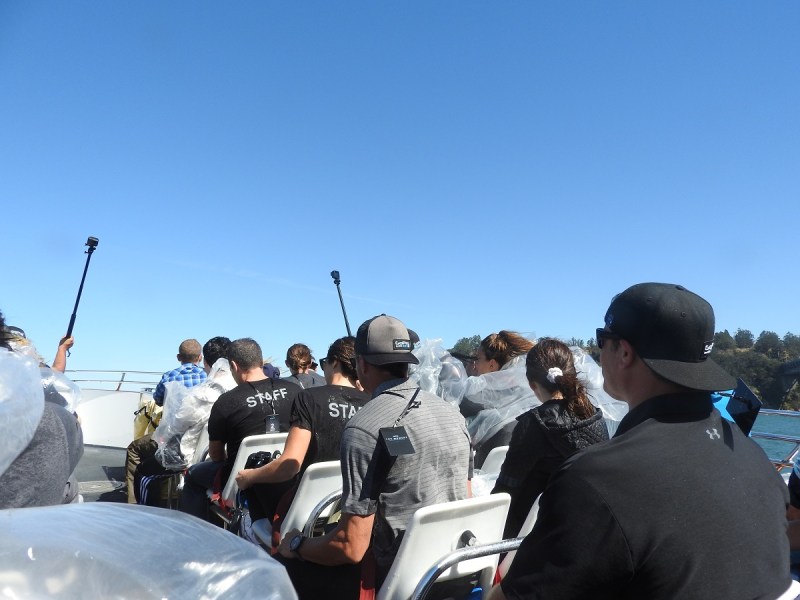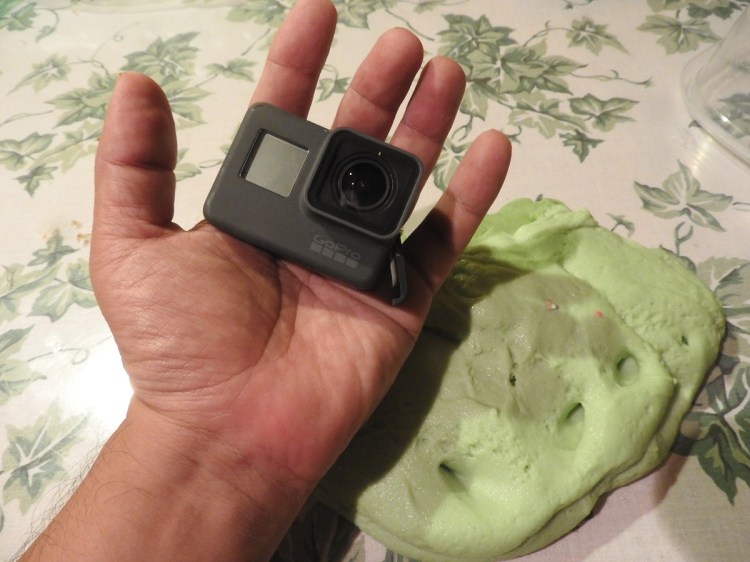GoPro yesterday announced its GoPro Hero6 Black action camera with the ability to record video in 4K resolution at 60 frames per second. That’s pretty impressive for a camera that seems so tiny.
It’s so small — about half the size of a wallet — that you really ought to attach it to the accompanying handle just so you don’t lose it. But it packs a lot of punch, particularly when you use it with a smartphone and its automated software for creating videos. I went to GoPro’s event yesterday and got hands-on time with the camera. I shot the video below and used the GoPro app to automatically stitch together an edited three-minute video.
GoPro brings a real sense of passion to its action cameras, as reflected in its event at the fancy California Academy of Sciences. GoPro CEO Nick Woodman stood in a darkened planetarium and showed what the latest camera could do on a gigantic surround screen. Everybody cheered when Woodman unveiled the Hero6, the new Fusion 360-degree camera, and follow feature for the Karma drone. The promo video of action stunts on the huge screen was impressive. As surfers and bikers and wingsuit enthusiasts were showing off what they could do, I was wondering if I could make a cool GoPro video of me playing video games on my couch.
Fortunately for me, the GoPro people thought of an excellent way for me to show off the capabilities of their $500 camera. They took us on a bus and shipped us out to Pier 39, where we boarded the Rocket Boat, which is a giant speed boat built to carry dozens of people. We boarded, donned our ponchos, and strapped in.
June 5th: The AI Audit in NYC
Join us next week in NYC to engage with top executive leaders, delving into strategies for auditing AI models to ensure fairness, optimal performance, and ethical compliance across diverse organizations. Secure your attendance for this exclusive invite-only event.

Above: A crowd of GoPro Hero6 Black shooters on the Rocket Boat.
The boat took a while to get to top speed. It’s hard to tell we’re going that fast in the video. But you’ll notice that the ponchos were flapping back and forth because of the wind in our faces. Every now and then the driver would do a skidding turn, sometimes splashing a lot of water on board. The GoPro is waterproof to 33 feet deep.
The boat was always bouncing when we were riding it. But you’ll notice that you don’t see that bouncing in the video. That’s not because I have a steady hand or great post-processing skills. It’s because the camera has built-in video stabilization (which you have to turn on). The camera has a new custom-designed GP1 processor, which enables the improved stabilization, better resolution, and faster speed. It can do 1080p video at 240 frames per second. The boat captain took us to the Bay Bridge, where he spun around a bit more. I held my arm up in the air as long as I could. Then we headed back to the pier.
At that point, I opened the GoPro app on my iPhone and transferred a bunch of the video wirelessly, via the GoPro’s built-in Wi-Fi networking. The data transfer is a lot faster, as it uses the interference-free 5-gigahertz spectrum. I transferred a dozen or so clips and fired up QuikStories. The app selected a few seconds of video from each app and stitched them all together into one video. The video (which you see below in both 720p and 4K formats) was stabilized and had its own sound track.
Here’s the 720p version.
Here’s the 4K version.
Disclosure: GoPro provided a Hero6 for this video.

